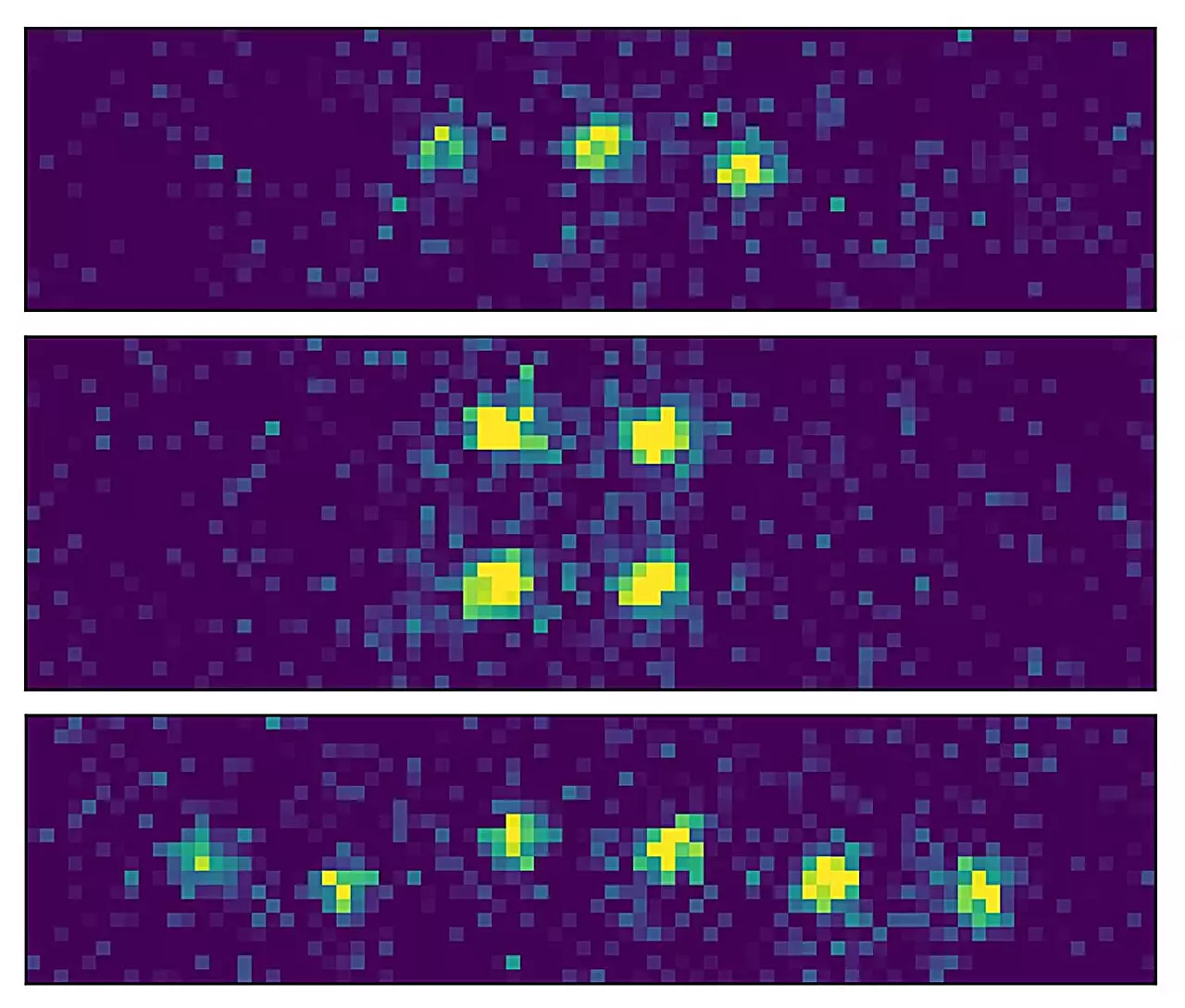Quantum entanglement, often referred to as Einstein’s “spooky action at a distance,” stands as a pivotal element in the emerging landscape of quantum information science. Its applications in quantum computing and communication networks create a thrilling vision of what the future may hold. Recent advances, particularly from researchers at the Max Planck Institute of Quantum Optics, have catapulted this enigmatic phenomenon into new realms of feasibility. Their groundbreaking work emphasizes that entangling stationary quantum bits, or qubits, with photons—considered moving qubits—can now be executed with remarkable efficiency.
The implications of these advancements stretch far and wide. The ability to efficiently connect qubits, regardless of whether they are at rest or in motion, is essential for the development of a robust quantum internet. Instead of being merely theoretical, researchers are now inching closer to realizing that dream, thanks to innovations in quantum technology that allow for almost instantaneous entangling processes.
The Technical Marvels Behind Quantum Entanglement
The challenge that ever looms over the field of quantum mechanics is ensuring that qubits can remain entangled during the transmission of information. This is where the work of Gerhard Rempe and his team becomes truly groundbreaking. By employing a novel setup that integrates ultracold rubidium atoms trapped between mirrors, they orchestrate a dance where these atoms can interact with photons—flying qubits—efficiently.
This innovative approach involves a resonator design where photons bounce between mirrors approximately 20,000 times. It’s akin to a complex ping-pong match, where the reliability of each bounce is crucial for successful entanglement. Notably, one of these mirrors is partially transparent, allowing the entangled photons to exit in a predetermined direction, thus ensuring their integration into optical fibers—an essential feature for long-distance quantum communication.
Multiplexing: A Game-Changer for Quantum Connectivity
The concept of multiplexing emerges as a vital technique that holds the key to overcoming significant barriers in quantum communication. Essentially, multiplexing enables multiple quantum channels to function simultaneously, enhancing the likelihood that at least one channel maintains a reliable connection, akin to navigational strategies employed in classical information technologies.
This multiplexing technique presents a game changer, not only for long-distance communications via a future quantum internet but also for establishing local quantum networks, which rely on many smaller connected processors. The current advancements in quantum entanglement have shown that it’s possible to use multiplexing to create more stable connections among qubits, forming a more powerful distributed quantum computer in the process.
The Intricacies of Laser Tweezing in Quantum Physics
Among the many marvels of their method, the use of laser tweezers to manipulate individual qubits stands out. This meticulous technique allows researchers to introduce and precisely control multiple atoms within the narrow confines of their resonator. Envision these optical tweezers as finely tuned extensions of the researchers’ will—they can move atoms into position with incredible precision, ultimately facilitating entanglement on demand.
As described by Lukas Hartung, a Ph.D. student involved in the research, this process is no simple feat. With the mirrors spaced just half a millimeter apart, it requires a synchronized ballet of laser-focused beams that can capture and transport each atom seamlessly. Achieving successful entanglement with almost 100% reliability when using these tools showcases not just technical prowess, but also a significant conceptual leap in quantum mechanics.
Visions of a Quantum-Enabled Future
What lies ahead is a dazzling future where the limitations of current computational technologies may be eclipsed by the extraordinary capabilities of quantum networks. Imagine a world where distributed quantum computers, leveraging a network of sophisticated resonators and advanced multiplexing techniques, work collaboratively to process information at speeds unimaginable by today’s standards.
The potential applications of such systems extend well beyond theoretical curiosity. They could revolutionize fields such as cryptography, drug discovery, and machine learning, opening doors to innovations that have been constrained by classical computing’s limitations. This quantum leap, however, hinges on the continued development of technologies that allow for the efficient interfacing of stationary and flying qubits, effectively paving the path toward an integrated and functional quantum internet.
The pioneering research emerging from institutions like the Max Planck Institute represents a watershed moment in quantum science. It serves as a testament to human ingenuity, where the age-old mysteries of quantum entanglement are progressively decoded, one advancement at a time. What seemed like a fanciful dream is steadily transforming into reality, forging a future where quantum computing becomes not just a possibility but an imminent venture poised to reshape our world.

